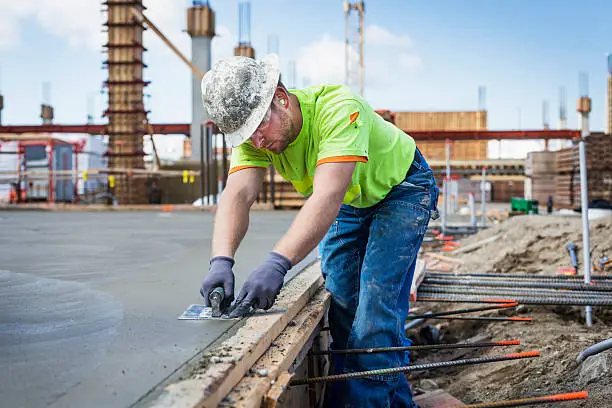Role Of Engineering In Construction
In this article, we discuss the Role Of Engineering In Construction. Engineering has a significant impact on the lives of people all around the world. It encompasses a wide range of disciplines that use science and mathematics to develop solutions for technical problems. So what is engineering?
Engineering is the application of scientific concepts to the design and construction of machinery, structures, and other objects such as bridges, railways, roads, automobiles, and buildings. Engineering has existed since ancient times and has been a great contributor to human advancement.
The Egyptian pyramids, Mesopotamian ziggurats, the Acropolis, and the Parthenon in Greece, among many others, are testaments to the brilliance and craftsmanship of ancient engineering. In construction, structural engineers and building service engineers are major key players on any building project.
Building services engineers develop, plan, manage, and analyze systems that make buildings more pleasant, useful, efficient, and secure. Thermal, ventilation and air conditioning (HVAC), waste and drainage, lights, electricity, lifts and escalators, control systems, and so on are typical examples of these systems.
Engineering Roles in Construction
1. Safety
Most people expect to live and work in secure and convenient buildings, but many are unaware of the enormous contribution engineers provide to the building project. Engineers are accountable for executing safety precautions during the design phase to guarantee that final constructions are safe and energy-efficient.
Engineers consider the general well-being of building and maintenance personnel throughout the design process of a structure. In most scenarios, design professionals include modest safeguards, such as constructing pillars in areas where workers are at a greater danger of falling.
Engineers also install high parapet walls to avoid collapses from great heights and ensure lighting fixtures are installed securely and in easily accessible regions. Construction companies in Lagos, such as SANA Global Projects, utilize safety management systems or SMS to prevent unforeseen hazards or accidents.
A construction safety management system is a systematic method of detecting hazards and controlling risks in the construction project. Examples of safety management systems are HS(G)65, ILO-OSH 2001, and OSHA.
2. Geotechnics
Geotechnical engineering, sometimes known as geotechnics, is a field of civil engineering that specializes in the engineering behavior of earth materials. Geotechnical engineering combines a variety of expert subjects, including geology, soil and rock mechanics, geophysics, and hydrogeology, to solve ground engineering challenges.
These engineers play an important role in the design and construction industries, from the subsurface and environmental testing and analysis through risk assessment for human health and the environment. A ground examination is carried out by geotechnical engineers (which is often a prerequisite of Local Authorities).
This examines a variety of soil mechanics which are critical to the safety of the employees and the environment, as well as the project’s performance. Geotechnical studies enable engineers to examine the strength of the earth, including slopes and soil layers, identify hazards, and recommend the ideal foundations for a project.
There are numerous environmental factors, constraints, and essential procedures that must be handled within every construction project for the project to be physically and legally feasible. If you begin a project without taking into account all of these factors, it may not only be delayed.
But it may also turn out to be exceedingly costly, both financially and in terms of reputation. This is why, in the first place, you should speak with a geotechnical engineer.
3. Technical Designs
The design of engineering works may necessitate the use of design theory from a variety of disciplines, such as hydraulics, thermodynamics, or nuclear physics. Research in structural systems and material technology has paved the path for more logical designs, new design concepts, and improved material economy.
The theory of structures and materials research has evolved in tandem as stress analysis of structures and systematic testing have become more developed. Not only do contemporary designers have sophisticated theories and easily available design data, but structural designs can now be carefully examined by computers.
The engineer is in charge of the design of the works, providing detailed specifications, drawings, and legal documentation to get competitive bidding prices. The engineer must assess the quotations and propose that one of them be accepted.
The engineer’s tasks are outlined in the contract, although he is not subject to it; the staff must monitor the construction, and the engineer must verify the completion of the job.
4. Site Investigation and analysis
A preliminary site assessment is included in the feasibility study, but if a proposal is approved, more thorough research is typically required. Spending money on a thorough investigation of the ground and substructure can save you a lot of money later on in corrective work or adjustments to building procedures.
Today, no significant project is launched without an exhaustive examination of the purpose and early analyzes of feasible plans that lead to a proposed design, sometimes with alternatives.
Feasibility studies may include various methods—for example, a bridge vs a canal in the case of a water crossing—or after the technique is determined, the route selection. Both economic and engineering issues must be addressed.
5. Maintenance
The contractor keeps the work in good condition to the satisfaction of the consulting engineer. Maintenance responsibility extends to supplementary and temporary activities where they are part of the overall construction. After construction, the contractor agrees to a period of maintenance, and payment of the final installment of the contract fee is held back until released by the consulting engineer.
The engineering and public works departments of central and municipal governments are largely concerned with maintenance, for which they employ direct labor. Construction companies in Lagos invest immensely in local labor for the maintenance of projects, this applies to public and private projects.
The turnkey or package contract, in which the contractor finances, designs, specifies, constructs, and commissions the whole project, has become a new development. The consulting engineer is hired by the contractor rather than the client in this case.
Conclusion
An engineer is critical to the successful completion of all types of engineering tasks. Their leadership is critical to ensuring the successful execution of a diverse range of projects. Using a project manager or supervisor instead of an engineer has risky repercussions.
Anyone who takes on the role of construction supervisor assumes responsibility for the safety and possible risks on the project site. Personnel who are not properly taught to detect adequate loads, structural stability, and other technical know-how can lead to cost overruns to correct errors, building collapses, and even the death of a crew member.
Construction companies in Lagos, and all over the world, deem it necessary to utilize the skills of an engineer at every stage of a project. I hope this article on the Role Of Engineering In Construction.


